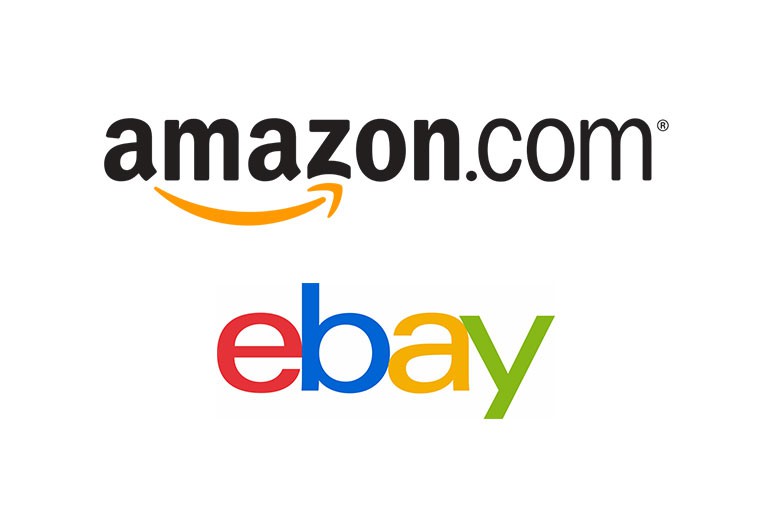eBay beats Amazon in m-commerce
Written by
Editorial TeamPublished on

Amazon and eBay are both enormous online marketplaces and thus, fierce competitors whose success depends mostly on the number of merchants who use them to sell various products.
As e-commerce evolves, though, different factors become relevant. Amazon may have more customers in general, but it’s actually eBay that takes the lead when it comes to m-commerce. And here’s why it matters, especially nowadays.
Battle of the giants

Although Amazon and eBay are pretty similar, Amazon tends to favour larger brands and retailers, and it’s mostly known for selling new products. What’s particularly interesting is that in the case of certain brands (and there’s a whole list that specifies them), sellers are obliged to pay a fee in order to offer them for sale.
Still, the company is said to focus on customers, aiming to provide seamless user experience, as well as proper customer support. It may be the reason why it often leaves the competition far behind when it comes to popularity and customer satisfaction in online retail.
eBay, on the other hand, is a better choice for used items and collectables (even though plenty of the sold items are actually brand new). It doesn’t have its own brand and is ultimately a great marketplace for smaller sellers. Amazon may have more customers and grow faster, but some sellers still prefer eBay since it’s a pure marketplace which doesn’t compete with its merchants for sales.
Plus, eBay enables the sellers to communicate directly with customers and post their contact details on the site, while Amazon controls the whole shopping experience and leaves no room for negotiation. There’s also another advantage – eBay has a more international scope and more varied customer base, which is important for many sellers out there.
The main challenge eBay faces, though, is to confront Amazon, but there’s only a slight chance to beat this online retail giant in its own game. That’s why eBay intends to excel in areas where Amazon lags – and this strategy seems to be paying off.
Although Amazon lead in popular retail websites, eBay was the number one retail app in the US for both Android and iOS, according to The E-commerce Report – United States 2018. The report was published by E-commerce Foundation and provides a brief overview of the state of the American e-commerce market, including trends, facts, figures, and other valuable insights.
Now, why is it significant? Let’s face it – we live in an increasingly mobile-first world. E-commerce itself changed the way we shop, and using our smartphones to do so is just another step towards the transformation. Shopping online became much more convenient and can now be done from anywhere, at any time.
The rise of m-commerce
M-commerce (or mobile commerce) simply describes the ability to sell and purchase through a mobile device. It basically means that having a website that can be displayed properly on mobile devices is an absolute must nowadays. Increasingly more customers are accessing e-commerce platforms via their mobile devices – and the problem is that they can easily give up on your site after a bad mobile experience.
It’s our responsibility to ensure a seamless shopping experience, both on desktops and mobile devices. E-commerce is a highly competitive industry, which means that customers won’t hesitate to buy from someone else if they encounter even the smallest issue.
On this occasion, though, there’s another trend worth mentioning. M-commerce is not only about having a mobile version of your e-commerce site. Actually, it’s mobile apps that started to truly reshape the industry (and not only e-commerce, as a matter of fact).
Since studies have shown that the majority of users prefers mobile retails apps than browsing websites on their mobile devices, online stores and platforms are investing in their own software and observing a steady increase in sales via mobile apps – including Amazon.
Nonetheless, it’s eBay who seems to be truly taking advantage of m-commerce. Could it be the way to put Amazon entirely out of the competition?One thing is certain – the future of m-commerce is definitely bright. There are still some improvements to be made, but it has come a long way, and it’s still expected to grow.
Smartphone manufacturers and software developers are already introducing the technologies to make transactions faster and more secure. At the same time, retailers are improving user experience and introducing advanced mobile apps, or turning the mobile versions of their websites into Progressive Web Apps.
eBay vs Amazon – does the battle truly matter for the sellers, though?
There’s no doubt that Amazon beats eBay in terms of actual profit. But in order to decide whether to sell on Amazon or eBay, we should always have your business in mind – instead of how much money these giants actually make.
There’s simply no single best platform to offer the products for sale, as both have certain advantages and disadvantages.If we aim for the cheapest marketplace in terms of fees, we want to develop a strong brand and sell mostly used items, we should go for eBay.
Amazon, on the other hand, will be a better choice if we don’t mind paying some extra fees in exchange for having the company take care of shipping and handling it all for us, and we care more about generating sales rather than maintaining brand identity.
Selling on popular platforms makes a lot of sense in terms of marketing and promotion of our products. However, before choosing what could work better for the business we should ask ourselves a few questions. First, what items are we planning to sell?
Certain products are favoured by eBay, whereas some are more common on Amazon. It also matters where do we plan to sell it, as some markets may not be covered by eBay or Amazon, or simply prefer one platform over another.
On this account, it’s also worth taking into account what our budget is and how much time do we have for selling on these platforms, as it may be beneficial to do it on both. We should keep in mind that different strategies may be needed, though.
In any case, there’s also another battle to win for eBay and Amazon – and it may even be a more important one. When competing for the number of sellers, they have to face the threats coming from China as well. First of all, the growing numbers of Chinese sellers on eBay and Amazon may take away our business – especially when cross-border e-commerce is growing.
Secondly, enormous e-commerce players from China can basically dethronize both American giants in the future. Especially since eBay already failed on the Chinese market, whereas Alibaba seems to be doing just fine outside of its country of origin.
That’s precisely why it’s important for eBay and Amazon to continue to develop and thus, please their users. Only then they both stand a chance against the Asian competitors.


